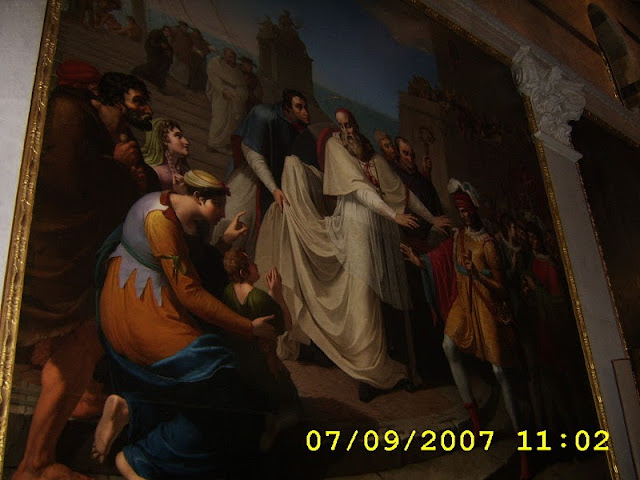Pisa is a city in Toscana (Tuscany) in Central Italy, located on the right bank of the mouth of the River Arno on the Ligurian Sea. It is the capital city of the Province of Pisa. The Leaning Tower of Pisa (the bell tower of its cathedral) is one of the most recognizable structures in the world. The city is home to approximately 88,000 residents and is one of the top tourist destinations in Italy.
The Torre Pendente di Pisa (Leaning Tower of Pisa) is the Campinile or freestanding bell tower of the Duomo di Pisa (Pisa Cathedral). It is situated behind the Duomo and is the third oldest structure in the Piazza del Duomo after the Cathedral and the Baptistry. The tower is 183 foot-high from the low side and 186 foot-high from the high side.
Construction started in 1173 and occurred in three stages over 177 years. The tower began to sink after construction has progressed to the second floor in 1178. This was due to an inadequate three meter foundation and a weak unstable subsoil. Structural restoration work performed between 1990 and 2001 resulted in a decrease in the angle of declination of the tower from 5.5 degrees to 4 degrees.
At the heart of the Piazza del Duomo is the Santa Maria Assunta (St. Mary of the Assumption Cathedral). This is a five-naved medieval cathedral with a three-naved transept. It is also known as the Primatial with the Archbishop of Pisa being the Primate since 1092. Construction started in 1064 by the Italian architect Busketo and set the model for the distinctive Pisan Romanesque style of architecture with a strong Byzantine influence.
The Duomo contains the remains of St. Ranieri, the patron saint of Pisa and the tombs of the Holy Roman Emperor Henry VII and Pope Gregory VIII. It also contains some religious relics brought during the Crusades, the remains of St. Abibo, St. Gamaliel and St. Nicodemus and a vase believed to be one of the jars of Cana.
The Battistero di San Giovanni (Baptistry of St. John) started construction in 1152 and completed in 1363. This marble structure is 55 meters high with a circumference of 107 meters and is the largest baptistry in Italy. The architecture shows the transition from Romanesque style of the lower half with its rounded arches to Gothic style of the upper half with its pointed arches.
While the Leaning Tower is the most famous image of the city, there are other works of art and architecture in the city's Piazza del Duomo, also known as Piazza dei Miracoli (Square of Miracles). The Piazza del Duomo also contains the Duomo (Cathedral), the Baptistry and the Camposanto Monumentale (the monumental cemetary).
Pisa has a very interesting history. The ancient Roman author, Strabo, speculated the the mythical King Nestor of Pylos founded Pisa after the fall of Troy. Pisa served as the base for Roman naval expeditions against Ligurians, Gauls, and Carthaginians. In 180 BC, it became an official Roman colony as Portus Pisanus. The Roman Emperor Augustus fortified the port colony and changed its name to Colonia lulia obsequens.
The power of Pisa as a mighty maritime nation began to grow and reached its apex in the 11th century when it acquired traditional fame as one of the four main historical Maritime Republics of Italy. In 1063, Admiral Giovanni Orlando conquered Palermo in the island of Sicily from the Saracen pirates. The gold treasure taken from the Saracens in Palermo allowed the Pisans to start building their Duomo and the other monuments in the famous Piazza del Duomo.
In 1113, Pisa under the direction of Pope Paschal II and with the collaboration of the Count of Barcelona liberated the Balearic Islands in Spain from the Moors and brought the Muslim King and Queen of Majorca to Toscana. For the next two centuries, Pisa was in constant naval warfare against other maritime powers such as Genoa and Venice for supremacy in the Mediterranean Sea.
Pisa was the birthplace of the famed astronomer, mathematician, physicist and philosopher Galileo Galilei. Galileo, according to Stepehn Hawking, was the Father of Modern Science.













































































